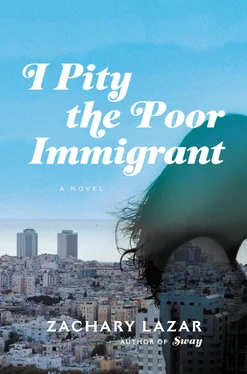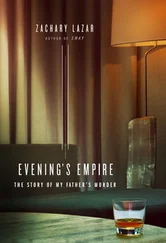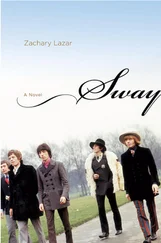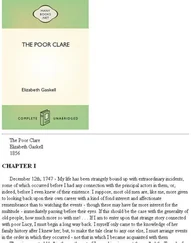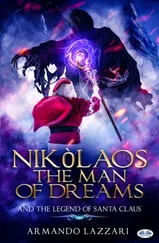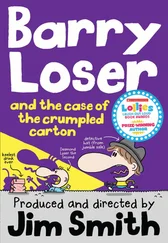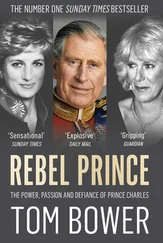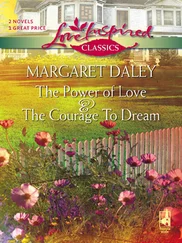The place I walked to the next morning was Me’a Shearim, the center of ultra-Orthodox Jerusalem, once a planned neighborhood of garden apartments for middle-class secular Jews, now a slum without gardens, trees, or vegetation of any kind. The cement or concrete buildings had deteriorated into something that looked remarkably like a modern version of an eighteenth-century shtetl, a place of sagging floors and flaking paint, no ornament other than the practicalities of business signs and political and religious bulletins. Laundry hung in the spaces between the beige and gray buildings. Car exhaust, litter, broken toys. It was a shtetl not by design but by choice, a ghetto or a Lower East Side slum not by design but by choice. If I’d been less irrational that morning, I might have remembered that no one had asked me to go to Me’a Shearim — in fact, there were large signs urging strangers not to intrude. It was the Sabbath, and would be the third night of Hanukkah, and so there were people out shopping for the evening meal, the storefronts open to reveal a few pale apples, onions, sacks of potatoes. I felt like a stranger in the broadest sense. “Strange,” because although the people around me were Jews, as was I, none of them looked at me, not even by accident, not once. The men wore black hats and dark suits with white shirts, or they wore outlandish silk robes and silk stockings, round fur-trimmed crowns called shtreimlech. The women were sexless, all but invisible. I was from some other place and time — probably I wasn’t a Jew at all in their minds. Rachel had invited me to Shabbat dinner at her house that night but I had declined, because in addition to Hanukkah and Shabbat, it was also the third anniversary of David Bellen’s murder. I imagined the prayers and rituals I wouldn’t know, the yahrzeit candle in its glass, and I thought of Gila’s word yored. The prayers and rituals in light of that word seemed like ash from some fire that had burned through generations of strangers who happened to be my ancestors. I didn’t want to speak to my ancestors. I didn’t want to hear what they thought of me.
In a light that is fierce and strong one can see the world dissolve. To weak eyes it becomes solid, to weaker eyes it shows fists, before still weaker eyes it feels ashamed and smites down him who dares to look at it.
Dumpsters, air-conditioning units, the street beneath my feet crumbling and rutted with potholes, almost a dirt road in places. I tried to remember that the people before me were meant to be uninterested in the griminess of the physical world, that in their devoutness they were focused instead on the imminent, holy presence beneath its surface. But the more I looked at them, the more I thought of another passage from Kafka:
What have I in common with Jews? I have hardly anything in common with myself and should stand very quietly in a corner, content that I can breathe.

The third anniversary of Bellen’s murder. When I got back to my hotel that afternoon, I looked over the piece I’d written about it in 2009, particularly at the ending, where I quote an e-mail, presumably from Oded Voss, tying the murder to organized crime:
He arranges a deal — his letters and papers, worth more when he’s dead, sold through someone who could get their full worth, someone from his old neighborhood. Proceeds will go to the useless son. The son has no idea about any of this. Any number of scenarios after that. Maybe Bellen’s broker/collaborator is so disgusted by the idea of Bellen contemplating all this that he kills Bellen himself, just because he can. Maybe that was somehow implied in their conversation all along. Maybe Bellen killed himself. Maybe they drove him to Beit Sahour and let him blow his own brains out behind a construction site. Maybe they let him do it in Tel Aviv. The people I’m talking about can arrange these things anywhere. They hate the Arabs but they also work with the Arabs. Was it Bellen’s inspiration or theirs to dump the body in Beit Sahour?
I realized that after almost three years I no longer believed in these theories of the crime. They spoke to me now more of the theory’s probable creator, Oded Voss, than of the mystery itself. I thought of what Rachel had said, that Eliav had inherited only a small amount of money. I thought of Eliav’s nightmare. “I was in the room where it happened,” Eliav would say. I thought of my waking dream the day before of those boys with their rifles marching Bellen across the rocky field.
I went to Tel Aviv that Monday, still not having managed to talk to Voss since my arrival. We’d been playing phone tag, perhaps half deliberately, and so when I got to Tel Aviv I went by myself to Bellen’s childhood neighborhood, Hatikvah, and to the steakhouse on Etzel Street that Voss had taken me to the last time we’d been together. I had forgotten how small the restaurant was, how brightly lit. There on the side wall were those signed and framed photographs of Israeli athletes and politicians and movie stars, along with a picture of the former owner, Yehezkel Aslan, one of the gangsters who appears in Kid Bethlehem. I chose a table behind the only other customers, a pair of Mizrahi men seated before a spread of a dozen salads in tiny dishes, pita bread, kebabs. One was on his cell phone, the other talked to the waitress while he fingered a large stack of shekel notes beside two other stacks in rubber bands. I realize how unreal that sounds, how like a movie, but it’s the paradox of places like the steakhouse that they don’t seem quite real, even when you’re there. Bellen’s picture was not on the wall — it hadn’t been there before either, but the absence struck me this time as deliberate, ghostly. Perhaps I was wrong about Voss’s theory. Perhaps outside the restaurant, somewhere in Hatikvah, Bellen’s killers really were still at large.

I went for a walk after lunch through the outdoor market, a place oddly reminiscent of a large train station, with its rows of prefabricated stalls, roofed by large white plastic panels like the ones at the restaurant at which I’d had lunch with Rachel. People browsed through bins of multicolored candies, dried fruits, nuts, spices, olive oil, the women dragging behind them those graceless wheeled carts made of plaid vinyl, the men carrying their purchases in pale orange plastic bags. Shoes, key chains, wallets, kitchenware, plungers. The drama of buying and selling, a thousand actors playing themselves with a slightly heightened vigor amid the dry goods and the bins laden with produce. Not ghostly Me’a Shearim but strident Tel Aviv. Not the pious in their ghetto but ordinary people focused on the simple comings and goings of daily life. I walked all the way back to my hotel through the parts of the city that Eliav would have known, endless stretches of shabby little shops, noise, buildings the color of wet cement, traffic, smog. In Levinsky Park, crowds of African men loitered or waited for day work, refugees from war and genocide in Eritrea and South Sudan, their belongings in shopping carts or just piled beside a tree — foam pads, carpets, blankets. Homeless people without status in a country frightened by their arrival. Not far from where they gathered was the bus station, where Eliav had bought drugs in his twenties and early thirties and perhaps again that November. It was a few blocks down from the no-man’s-land on either side of Highway 20, a place of vacant lots full of dust and weeds and the abandoned shell of what might once have been a municipal garage, now covered in graffiti. The wasteland around that highway reminded me of Bellen’s conjuration of Eliav in the midst of one of his relapses. He remembers something about a sign that says PAZ — blue letters on a yellow ground, PAZ — but what he no longer knows is if this sign was a part of his friend’s directions or whether its vivid colors and letters have only made it seem that it was part of those directions. I took a photograph of the abandoned garagelike structure — it didn’t have a sign that said PAZ but the graffiti on it called out to me for reasons I could only guess at in that moment. I learned later that the graffiti was a religious invocation. It was the name of a revered Hasidic rabbi, Nachman of Breslov, who among other things wrote mystical tales that influenced Kafka.
Читать дальше
